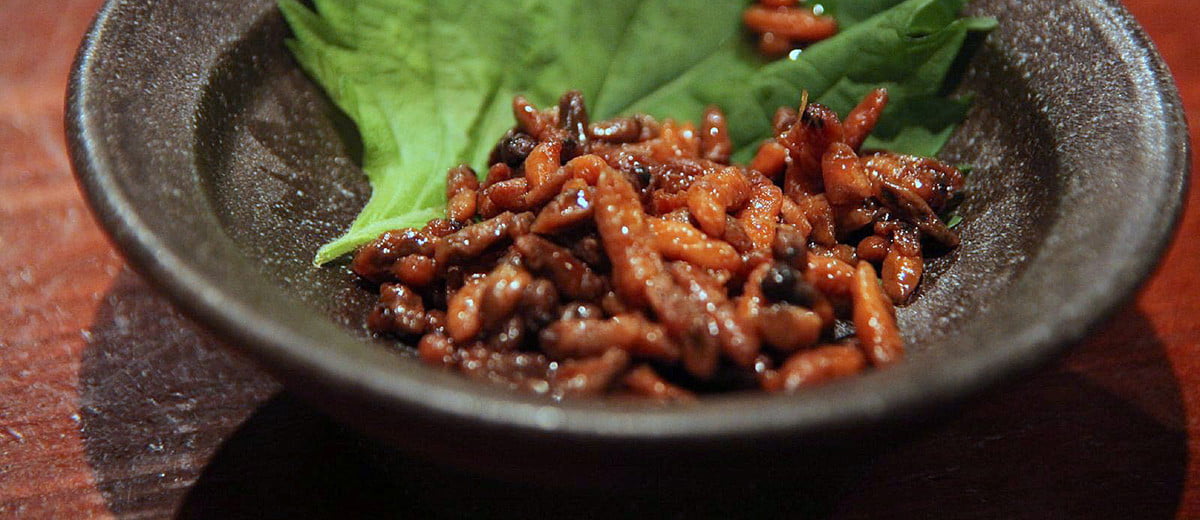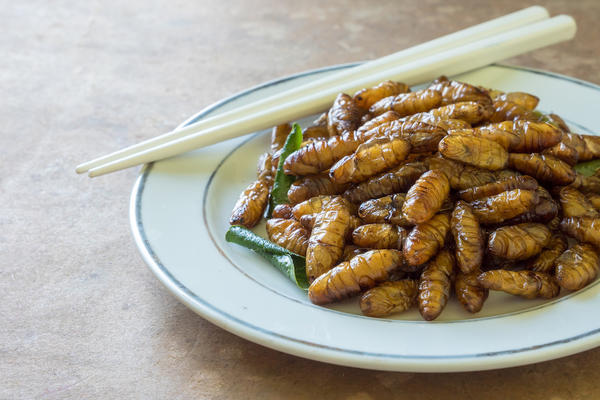
Hachinoko
Hachinoko In the realm of Japanese cuisine, there exists a delicacy that intrigues and captivates adventurous palates: Hachinoko. Derived from the Japanese words “hachi” (bee) and “noko” (child). Hachinoko refers to the larvae of honeybees, a culinary specialty cherished for its distinctive flavor and cultural significance. In this article, we delve into the world of Hachinoko, exploring its taste, preparation, and cultural context.

The Taste of Hachinoko:
Hachinok boasts a flavor profile that is simultaneously sweet, tangy, and slightly crunchy, with a hint of earthiness. The larvae, harvested from beehives during certain seasons. Absorb the nectar and pollen of flowers, infusing them with a unique essence that reflects the surrounding floral landscape. When properly prepared, Hachinoko offers a delicate balance of textures and flavors that tantalize the taste buds and leave a lasting impression on adventurous diners.
Cultural Significance:
In Japan, Hachinoko holds a special place in culinary tradition and folklore. Historically, beekeeping and the consumption of honeybee products have been practiced for centuries. With Hachinok revered as a seasonal delicacy enjoyed during festivals and special occasions. The harvesting and preparation of Hachinok are often steeped in ritual and reverence. Reflecting the deep cultural connection to nature and the appreciation for the bounty it provides.
Preparation and Serving:
To prepare Hachinoko, beekeepers carefully collect the larvae from beehives, ensuring minimal disruption to the colony. The larvae are then thoroughly cleaned and rinsed to remove any debris before being seasoned with salt or soy sauce and lightly grilled or sautéed. The resulting dish is typically served as a garnish or appetizer, accompanied by fresh vegetables, rice, or sake, enhancing the overall dining experience.
Culinary Innovation:
While Hachinoko remains a cherished tradition in Japan. Contemporary chefs and food enthusiasts are exploring innovative ways to incorporate this unique ingredient into modern cuisine. From Hachinoko-infused sauces and dressings to creative reinterpretations of classic dishes. There is a growing appreciation for the versatility and culinary potential of this delicacy. Its distinct flavor profile and cultural significance make Hachinok a sought-after ingredient in the realm of gastronomy.
Hachinoko embodies the essence of Japanese culinary tradition, offering a sensorial journey that celebrates the harmony between nature and culture. Its delicate flavor, rich history, and cultural significance make it a prized delicacy cherished by those who seek to explore the diverse tapestry of Japanese cuisine. Whether enjoyed as a traditional treat or incorporated into innovative culinary creations. Hachinoko invites diners to embark on a gastronomic adventure that celebrates the beauty and complexity of the natural world.
Exploring the Pros and Cons of Hachinoko: Japan’s Unique Culinary Delicacy
Hachinoko, the larvae of honeybees, is a Culinary Delicacy in Japan that has fascinated food enthusiasts for centuries. With its distinctive flavor and cultural significance, Hachinoko offers a sensory experience like no other. However, like any food item, Hachinok comes with its own set of advantages and disadvantages. In this article. We delve into the pros and cons of Hachinoko to provide a comprehensive understanding of this unique culinary offering.

Advantages of Hachinoko:
- Distinctive Flavor: Hachinoko boasts a unique taste profile that combines sweetness with a hint of tanginess and a slightly crunchy texture. This distinctive flavor makes it a Sought-After Delicacy among adventurous food enthusiasts who appreciate novel taste experiences.
- Cultural Significance: Hachinok holds a special place in Japanese culinary tradition and Folklore. Symbolizing the deep connection between humans and nature. Its consumption is often associated with festivals and special occasions. Reflecting the Reverence for the natural world and the bounty it provides.
- Nutritional Value: Hachinoko is rich in protein, vitamins, and minerals, making it a nutritious food source. In traditional Japanese cuisine, it is valued for its health benefits and is believed to boost vitality and stamina.
- Sustainable Harvesting: The harvesting of Hachinoko is typically done in a sustainable manner that minimizes harm to bee colonies. Beekeepers carefully collect the larvae without disrupting the overall health of the hive, ensuring the continued viability of bee populations.
Disadvantages of Hachinoko:
- Ethical Concerns: Some individuals may have ethical reservations about consuming Hachinoko due to the harvesting of bee larvae. Concerns may arise regarding the welfare of bees and the impact of larvae collection on bee populations, particularly in the context of declining bee populations worldwide.
- Allergen Risk: For individuals with allergies to bee products, consuming Hachinok can pose a significant health risk. Allergic reactions to bee stings or bee products can range from mild to severe and may require immediate medical attention.
- Environmental Impact: While sustainable harvesting practices are employed by responsible beekeepers, the increasing demand for Hachinoko may lead to overexploitation of bee populations and habitat degradation. Maintaining a balance between culinary demand and ecological sustainability is essential for preserving bee populations and biodiversity.
- Cultural Appropriation: As Hachinoko gains popularity beyond Japan’s borders, there is a risk of cultural Appropriation and Misrepresentation. It is important for consumers and chefs to approach Hachinoko with respect for its cultural origins and significance, acknowledging its place within Japanese culinary heritage.
Hachinoko offers a fascinating glimpse into the intersection of culinary tradition, cultural heritage, and natural ecosystems. While it delights adventurous palates with its unique flavor and holds cultural significance in Japan. Hachinoko also raises ethical, environmental, and health considerations that warrant careful reflection. By approaching Hachinoko with mindfulness and respect for its complexities, enthusiasts can appreciate this culinary delicacy while promoting sustainability. Cultural understanding, and ethical consumption practices.
Exploring Hachinoko: A Culinary Adventure in Japanese Cuisine
Hachinoko, the edible larvae of honeybees, occupies a unique niche in Japanese gastronomy, offering a taste experience that is both intriguing and unforgettable. As a delicacy deeply rooted in tradition and culture, Hachinoko has captured the curiosity of food enthusiasts worldwide. In this review, we embark on a culinary journey to explore the flavors, textures, and cultural significance of Hachinoko.

Appearance and Presentation:
Hachinoko typically presents as small, Translucent larvae with gengtoto a pale yellow hue. Served as a delicacy in Japanese cuisine, Hachinoko is often arranged in an Aesthetically Pleasing manner, Accentuating its delicate form and inviting diners to experience its unique taste profile.
Taste and Texture:
Upon the first bite, Hachinoko offers a surprising blend of flavors and textures. The larvae possess a subtle Sweetness Reminiscent of honey, Complemented by a hint of tanginess derived from their diet of nectar and pollen. The texture is slightly crunchy, providing a satisfying contrast to the tender interior. Overall, the taste of Hachinoko is delicate yet distinctive, leaving a lasting impression on the palate.
Cultural Significance:
In Japan, Hachinoko holds a special place in culinary tradition and Folklore, Symbolizing the Harmonious relationship between humans and nature. Its consumption is often associated with seasonal festivals and celebrations, reflecting the deep reverence for the natural world and the Interconnectedness of all living beings.
Preparation and Serving:
Hachinoko is typically prepared with care and precision to highlight its unique flavor and texture. The larvae are cleaned and rinsed thoroughly before being seasoned with salt or soy sauce and lightly grilled or sautéed. The resulting dish is served as a delicacy, often accompanied by fresh vegetables, rice, or sake, enhancing the overall dining experience.
Culinary Innovation:
While Hachinoko remains deeply rooted in tradition, contemporary chefs and food Enthusiasts are Exploring innovative ways to incorporate this unique ingredient into modern cuisine. From Hachinoko-infused sauces and dressings to creative Reinterpretations of classic dishes, there is a growing appreciation for the versatility and culinary potential of this delicacy.
Conclusion:
In conclusion, Hachinoko offers a Captivating Culinary experience that celebrates the rich tapestry of Japanese cuisine and culture. Its delicate flavor, unique texture, and cultural significance make it a Sought-After Delicacy among food enthusiasts who seek to explore the diverse world of gastronomy. Whether enjoyed as a traditional treat or incorporated into innovative culinary creations. Hachinoko invites diners on a culinary adventure that celebrates the beauty and complexity of the natural world.
Read More Article About “Sunday Roast Sensation: Savor the Heartwarming Magic of a Traditional Feast“








